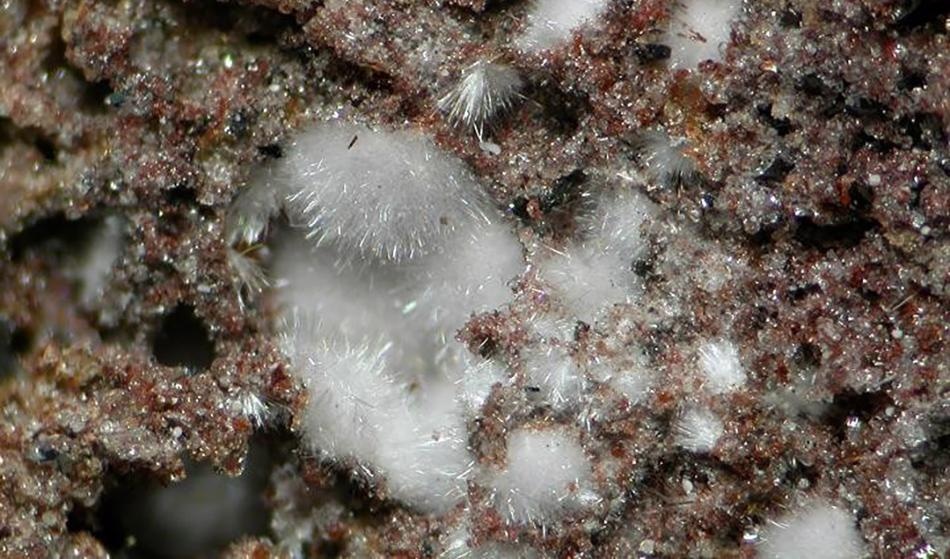Oct 3 2001

Wikimedia Commons
Mullite is the mineralogical name for the only chemically stable intermediate phase in the SiO2–Al2O3 system. The mineral rarely occurs in its natural form and can be found on the Isle of Mull off the western coast of Scotland.
Composition
Mullite is generally represented as 3Al2O3⋅2SiO2 (i.e. 60 mol% Al2O3). But in reality, it is a solid solution that has the equilibrium composition limits of 60–63 mol% Al2O3, below 1600 °C.
Synthetic Mullite
Different starting materials and preparation techniques are used to produce synthetic mullite ceramics. For instance, a mixture of sols, a mixture of solids, or a mixture of salt and sol can be used as the starting materials. Likewise, there is a range of preparation procedures, such as hydrothermal treatment of mixtures of sols, reaction sintering of mechanically combined powders, and chemical vapor deposition.
The properties of mullite are governed by the starting materials used and the preparation technique. Reaction-sintered mullite prepared from mechanically blended powders typically exhibit low fracture toughness (1–2 MPa m-1/2) and low strength (<200 MPa) because of the occurrence of amorphous grain boundary phases. On the other hand, gelation routes yield thoroughly mixed sub-micrometer particles that can be hot-pressed or sintered to make single-phase materials with excellent mechanical properties.
Mechanical properties can be further optimized by creating composites. The addition of Zr2O and SiC yields a fracture toughness of 7 MPa m-1/2 at room temperature.
Mullite in Porcelain
Mullite is also one of the vital ingredients used for making porcelain. Clays with less than 60% Al2O3 turn into mullite. The amount of mullite yielded is directly associated with the calcining temperature and the amount of Al2O3.
Key Properties
For a long time, mullite has been used as a refractory material. Its properties are as follows:
- Good electrical resistivity
- Optimal high-temperature strength
- Superior thermal stability
- Good thermal shock resistance
- Resistance to abrasion
- Resistance to oxidation and attack, in furnace atmospheres
- Resistance to a range of chemical attacks; it exhibits outstanding stability in acid metal slags, and is insoluble in a majority of the acids.
The approximate limiting temperature of use is 1600 °C in a vacuum and 1800 °C in air.
Common properties of mullite are listed in Table 1.
Table 1. Typical physical and mechanical properties of mullite.
| Property |
|
| Density (g/cm3) |
3.03 |
| Young’s Modulus (GPa) |
130 |
| Fracture Toughness (MPa.m-1/2) |
2-4 |
| Modulus of Rupture (MPa) |
160 |
| Thermal Expansion Co-Efficient (x10-6 /°C) |
4.5-5.6 |
| Thermal Conductivity (W/m.K) |
4.0-6.0 (100-1400 °C) |
| Maximum Operating Temperature (°C) |
1725 °C in air |
Applications
Refractories
Overall, the largest application of mullite-based products is in refractories. The steel and glass industries are two key markets.
The steel sector is the largest user, where refractoriness, thermal shock resistance, and high creep resistance are crucial. High-mullite-based products are primarily used in hot blast stove checker bricks.
A number of refractories in the steel sector have different amounts of mullite-based aggregates. Reheat furnaces, steel ladles, slide gates, and lances are examples of mullite-aggregate-based products with different levels of alumina content. The decrease in the use of bricks has led to an increase in the use of monolithic and precast shapes.
In the glass industry, mullite-based refractories are used in ports, burner blocks, and in checker bricks. These refractories are also used in the drawing chambers as well as in the upper structure of the tanks, where glass is melted. Thermal shock resistance, high hot strength, chemical attack resistance, and creep resistance are the key properties valued by the industry.
Mullite-based products also have resistance to particulate carryover into the glass melt. This is especially crucial in the production of flat glass, where contamination by low levels of Al2O3 is detrimental.
The ceramic industry is the next major user of mullite, especially in kiln furniture items like kiln setter slabs and posts that support ceramic-ware during firing.
In addition, the petrochemical and aluminum industries use mullite-based aggregates for applications that necessitate thermal shock resistance, chemical attack resistance, and hot-load strength.
Other Engineering Applications
New mullite materials with optimally controlled physical and mechanical properties have enabled the extensive use of the material.
Due to the optimal mechanical properties of high-purity mullites at high temperatures, they have been potentially used in high-temperature engineering ceramics, for instance, in turbine engine parts.
Mullite is also a desirable material for high-strength infrared transmitting windows. Protective coatings and electronic substrates are other applications of mullites.